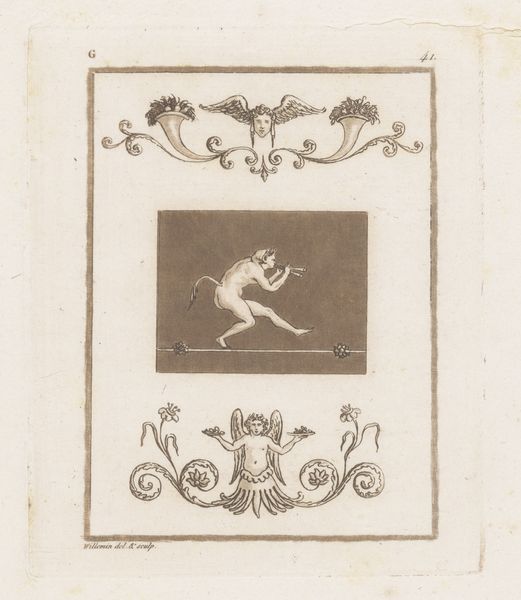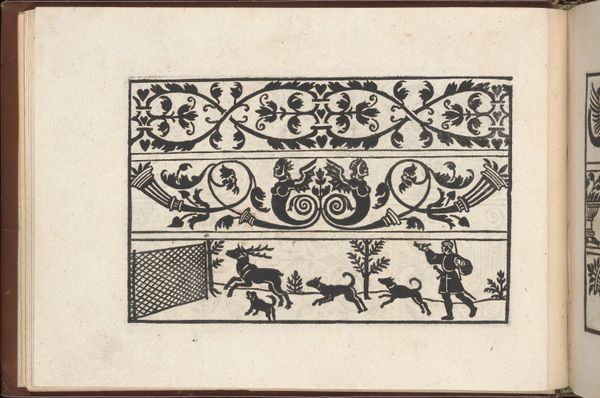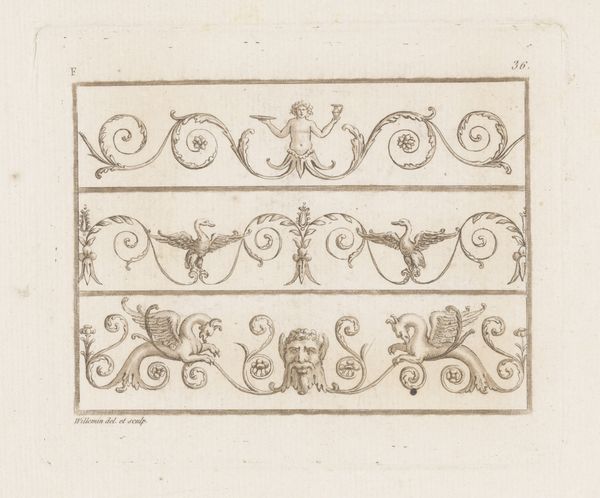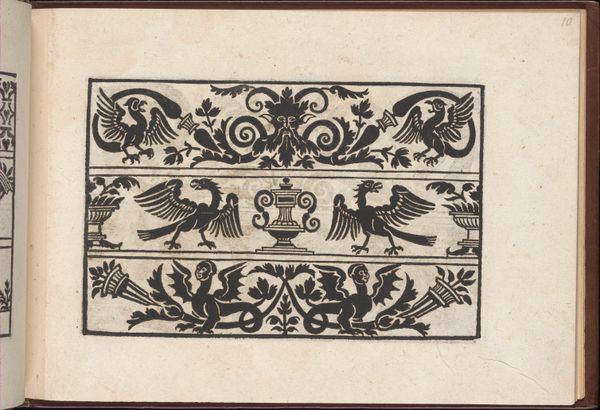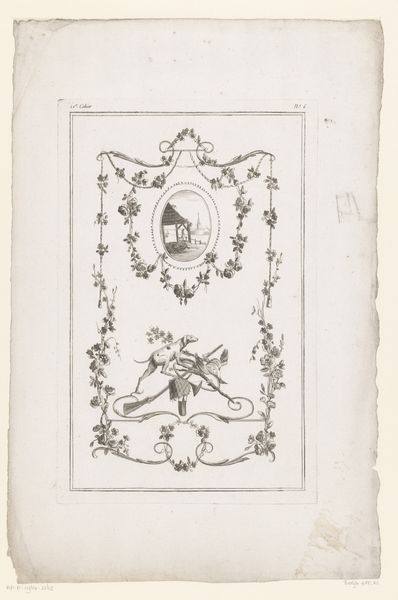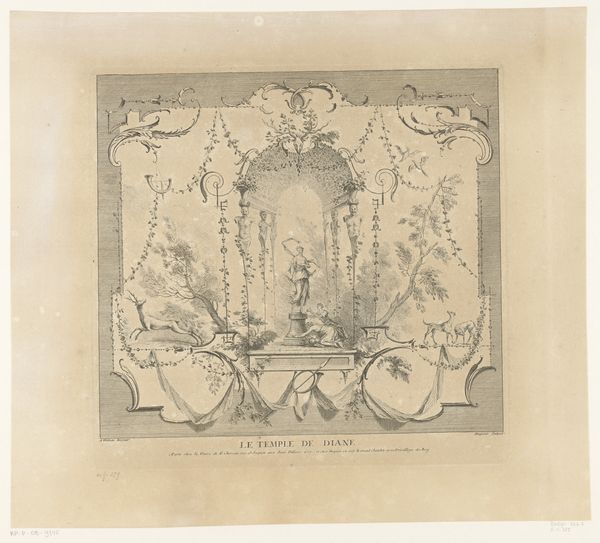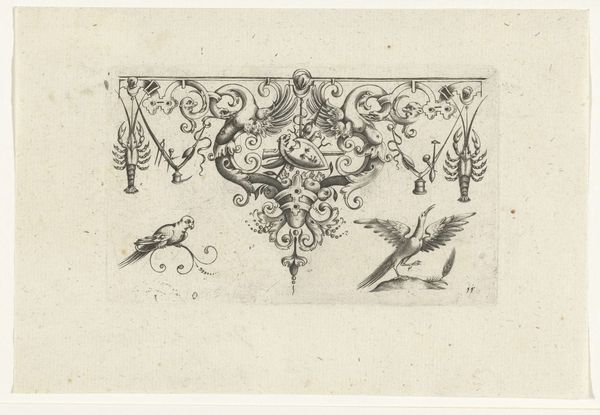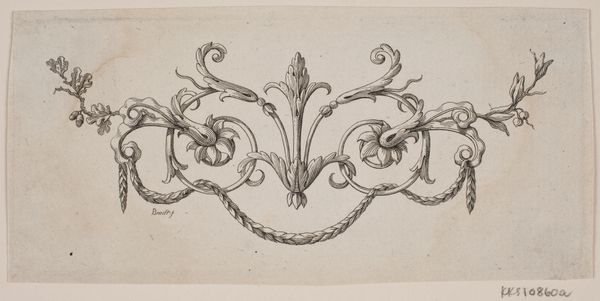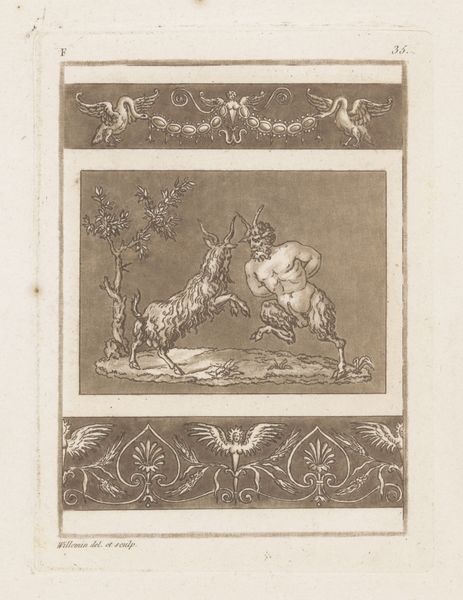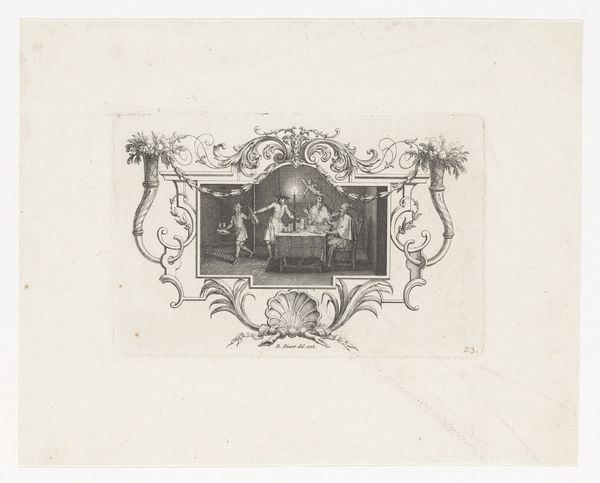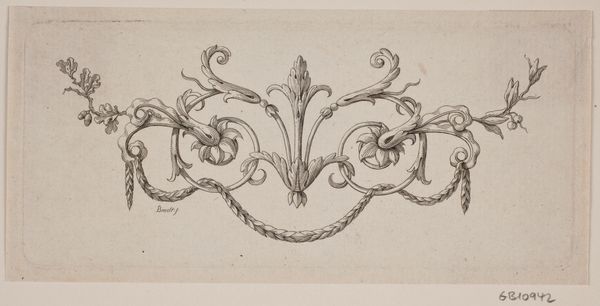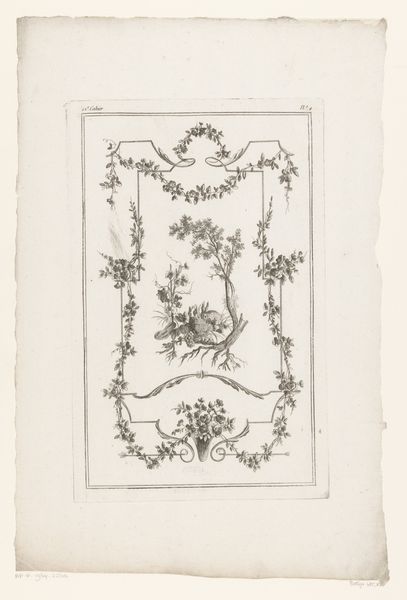
Dimensions: height 122 mm, width 146 mm
Copyright: Rijks Museum: Open Domain
Editor: Here we have "Zeewezens en vlechtwerk," or "Sea Creatures and Ornamentation," an etching from between 1775 and 1797, created by Nicolas Xavier Willemin. It has this really striking neoclassical decorative style... It almost looks like something you'd find on a Roman fresco. How do you interpret this work? Curator: That's a great observation. I see this print as participating in the late 18th-century fascination with classical antiquity, a fascination intertwined with colonialism and power. The idealized bodies and mythological creatures evoke a supposed golden age. But what does it mean to revive these images when they are being consumed by societies actively engaged in the exploitation of other cultures and peoples? Editor: So, you're suggesting that the beauty and harmony are a bit of a facade? That it maybe hides something darker? Curator: Precisely. Think about the socioeconomic conditions surrounding the work's creation. While some people admired this so-called "beauty," others experienced colonial oppression, the brutalities of the slave trade, and severe poverty. So how do these disparities and historical injustices inform your reading of "Sea Creatures"? Editor: I hadn't really considered that at first, I was so caught up in the classical aesthetics. Now I see how it also has the potential to reflect, or even reinforce, unequal power structures. The focus on idealized forms feels like a deliberate distraction from social inequalities. Curator: Exactly! Engaging with these issues opens up a whole new dimension, wouldn't you agree? We are able to look critically at what is shown and what is left out of this kind of representation. Editor: I completely agree. Thinking about the historical context really changes my perspective, I'm off to explore some new authors in the library. Thank you.
Comments
No comments
Be the first to comment and join the conversation on the ultimate creative platform.
